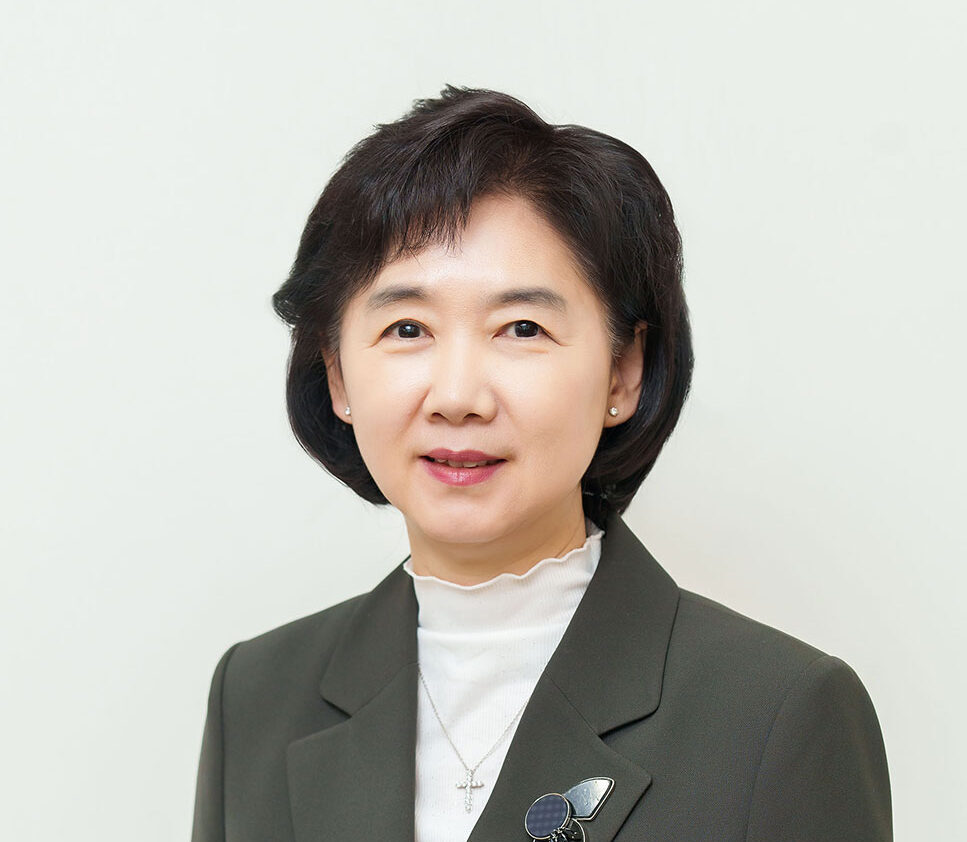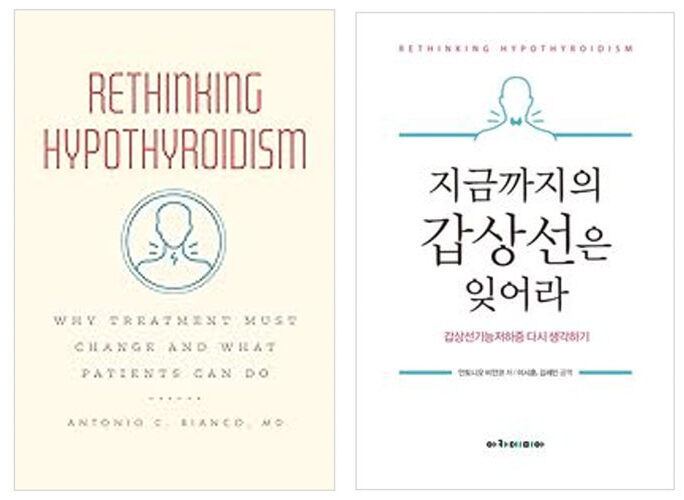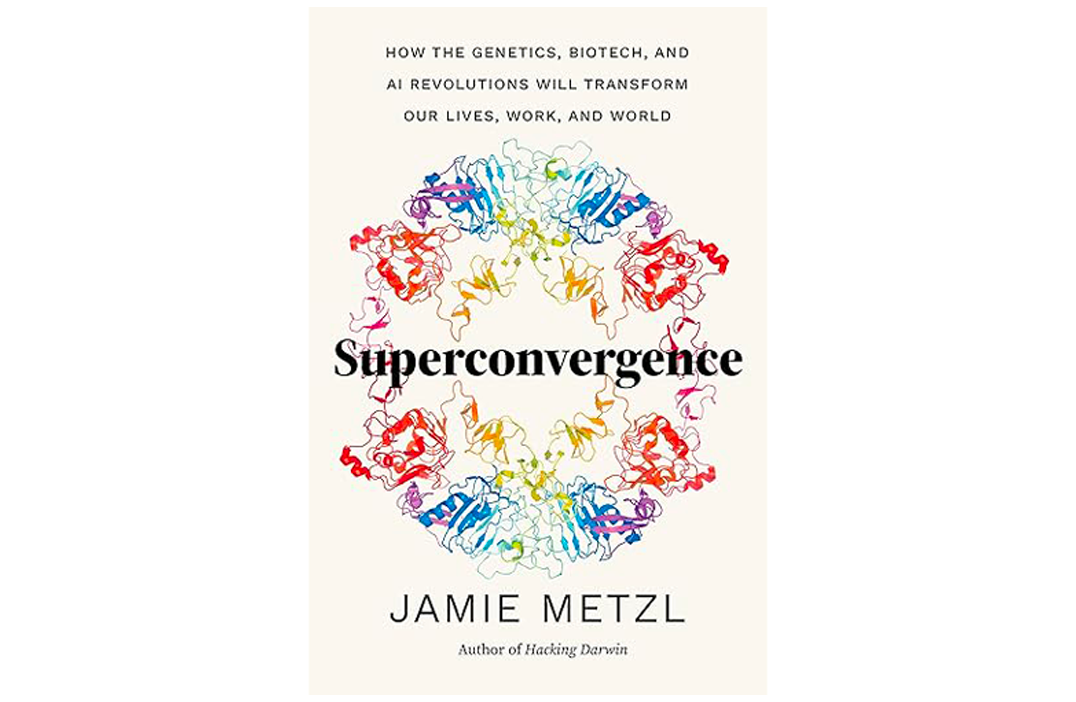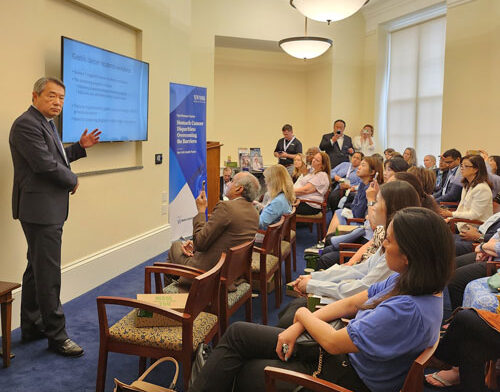Se-Min Kim, MD
- April 1, 2024
Kyoung Ryul Lee, MD, PhD, CEO of the SCL Group, Seoul Clinical Laboratory, a Specialist in Laboratory Medicine
Kyoung Ryul Lee, MD, PhD, CEO of the SCL Group, Seoul Clinical Laboratory, a Specialist in Laboratory Medicine What motivated your decision to attend medical school and become a physician? Could you share some particularly
- August 5, 2024
ISSUE 28
FROM THE PUBLISHER W elcome to the 28th edition of the World Asian Medical Journal. This issue encompasses a captivating cover story featuring an interview with Dr. Huang, a distinguished medical professional whose journey from
- August 5, 2024
Youngmee Jee, MD, PhD | Inspirational Asian Healthcare Leader
INSPIRATIONAL ASIAN HEALTHCARE LEADER Youngmee Jee, MD, PhD Commissioner of Korea Disease Control and Prevention Agency INTERVIEW 01 Tell us how you decided to pursue a career in medicine. How did you choose your specialty?
- September 21, 2024
Rethinking Hypothyroidism
Rethinking Hypothyroidism: Why Treatment Must Change and What Patients Can Do Author: Antonio C. Bianco, MD Translated by: Semin Kim, MD & Sihoon Lee, MD About the book “Rethinking Hypothyroidism” The limitations of current
- October 1, 2024
The Internet of Things (Revision 2021)
Purchase LinkThe Internet of Things (Revision 2021) Author: Sam Greengard We turn on the lights in our house from a desk in an office miles away. Our refrigerator alerts us to buy milk on the
- October 1, 2024
Superconvergence
Purchase LinkSuperconvergence Author: Jamie Metzl In Superconvergence, leading futurist and OneShared World founder Jamie Metzl explores how artificial intelligence, genome sequencing, gene editing, and other revolutionary technologies are transforming our lives, world, and future. These
- October 12, 2024
The Strategic Importance of Location in the U.S. for Foreign Bio and Pharma Companies
The Strategic Importance of Location in the U.S. for Foreign Bio and Pharma Companies DoHyun Cho, PhD (CEO, W Medical Strategy Group) The U.S. Market: A Cornerstone of Global Expansion For pharmaceutical and biotech companies,
- October 12, 2024
South Korea’s Healthcare Crisis: Beyond the Numbers
South Korea’s Healthcare Crisis: Beyond the Numbers Dongju Shin, Dong-Jin Shin INTRODUCTION The South Korean healthcare system has recently plunged into a significant crisis following a February 2024 announcement by the government to increase medical
- October 14, 2024
Overcoming Disparities in Gastric Cancer Care
Overcoming Disparities in Gastric Cancer Care Chul S. Hyun, MD, PhD, MPH Gastric Cancer and Prevention Screening Program, Yale School of Medicine, New Haven, CT Gastric cancer is the fifth most common cancer worldwide,
- October 15, 2024
The Global OR – An Introduction to Global Surgery
The Global OR – An Introduction to Global Surgery Kee B. Park, MD, MPH, Dawn Poh, MBBS, MRes Introduction An estimated 5 billion people worldwide lack access to timely, affordable, and safe surgical care, including
- October 18, 2024
- Medical Report
Hypothyroidism. A Common Condition with Unmet Needs
Abstract
Hypothyroidism is a common condition, often mediated by autoimmune processes, characterized by a deficiency in thyroid hormone. Untreated hypothyroidism can lead to significant clinical consequences, as thyroid hormones play a critical role in various physiological processes. For instance, hypothyroidism is closely associated with metabolic dysfunction-associated steatotic liver disease (MASLD) and hypercholesterolemia.
The current standard treatment, primarily based on levothyroxine (T4) supplementation, is effective in most patients. However, a subset of patients continues to experience persistent residual symptoms despite achieving biochemical euthyroidism. This lack of response may be due to reduced activity of the enzyme deiodinase (DIO), which is essential for converting T4 into the active hormone T3.
Although still debated, the combination of T3 and T4 has shown favorable results in a small group of patients. In the near future, a personalized approach based on individual DIO activity may help identify those who would benefit from T3 supplementation. Ultimately, the use of thyroid organoids in treatment may offer a definitive cure for hypothyroidism.
This mini review will summarize thyroid hormone physiology, the metabolic consequences of hypothyroidism, and the limitations of current treatment, as well as emerging developments on the horizon.
Thyroid hormone: The Key Hormone in Metabolism

Thyroid hormone is critical for bodily functions. Thyroid glands, in response to thyroid stimulating hormone (TSH) from pituitary glands, synthesize and secrete thyroid hormones. Tetraiodothyronine (T4) with four iodine residues serves as a pro-hormone, which is converted to potent and active hormone trioiodothyronine (T3) in the peripheral tissue by de-iodinase (DIO). In humans, T4 and T3 are secreted at a ratio of approximately 12:1 to 16:1; therefore, the concentration of T3 in systemic circulation is kept stable and readily available for the use. Thyroid hormone receptors are located in the nucleus, and present in two different types: thyroid hormone receptor α and β (TRα and TRβ). For example, brain, bone and heart express TRα while pituitary glands and liver expresses TRβ. This tissue specificity was utilized for treating fatty liver by thyroid hormone action (See below). There are three types of DIO in human (type 1, 2 and 3). DIO1 and DIO2 mainly convert T4 into an active T3, whereas DIO3 converts T4 into inactive reverse T3 (rT3). Interestingly, these enzymes have distinct tissue expression profiles, with DIO1 predominantly expressed in the liver and kidney, and DIO2 in the periphery tissues such as muscles, and in the pituitary gland and hypothalamus. (Fig1)
Hypothyroidism: Metabolic Consequence
Hypothyroidism, characterized by underactive thyroid function, is a common condition. In the United States, approximately 0.3% of the population is affected by overt hypothyroidism, and around 4.3% have subclinical hypothyroidism, which can progress to overt hypothyroidism (1). Similarly, in Korea, 0.7% of the population has overt hypothyroidism, and over 3% have subclinical hypothyroidism. (2, 3) About 90% of non-iatrogenic hypothyroidism in iodine-sufficient areas is caused by autoimmune-mediated inflammation, so-called Hashimoto disease (4).
Hypothyroidism can affect all organ systems, and these manifestations depend on the degree of hormone deficiency, although severe hypothyroidism is rarely seen nowadays. Among the broad spectrum of clinical consequence of hypothyroidism, the metabolic complications will be focused on here.
Overt and subclinical hypothyroidism is associated with increased levels of low-density lipoprotein (LDL), although predominantly less atherogenic large LDL particles (5). A subset of young male patients with hypothyroidism showed elevated serum triglyceride and C-reactive protein as well (5). Thyroid hormone plays a key role in lipid synthesis and degradation, the latter is significantly reduced in hypothyroidism (6). Therefore, plasma free fatty acid levels are decreased and mobilization of free fatty acids in response to fasting, catecholamines, and growth hormone is impaired greatly (7). However, the hypothyroidism as a risk factor for cardiovascular disease is not well understood because of inconsistent findings from the studies (8-10).
Recent interest in fatty liver, now officially named metabolic dysfunction-associated steatotic liver disease (MASLD) is closely related to the action of thyroid hormone. This condition is commonly seen in patients with diabetes and obesity, but also hypothyroidism. The prevalence of MASLD is 1.6 times higher in individuals with hypothyroidism, almost 40% higher compared with normal thyroid function (11, 12). Subclinical hypothyroidism has been identified as an independent risk factor for MASLD (12), and elevated TSH levels have been associated with a 1.8 to 2.3-fold increased risk of liver fibrosis (13). It is known that T3 action in hepatocytes regulates lipogenesis, β-oxidation of fatty acids, mitophagy, and cholesterol synthesis (14). Thus, lower T3 levels are linked to decreased lipolysis and reduced cholesterol clearance. Moreover, this regulatory system appears to be disrupted in damaged liver tissue. The recent development of the first FDA-approved thyroid receptor β (TRβ) agonist, Resimetron, for MASLD highlights the critical role of thyroid hormone effect in hepatic lipid metabolism (15, 16).
Hypothyroidism: Current Management
Treatment of hypothyroidism is generally straightforward, as patients typically respond well and show improvement with thyroid hormone supplements. For example, elevated LDL associated with hypothyroidism often decreases by about 5-10% of baseline levels after starting treatment. The mainstay of treatment is levothyroxine (T4), which takes advantage of the body’s ability to convert T4 into the active T3 required by tissues, a process that is physiologically regulated.(17)
Before synthetic thyroid hormone was available, desiccated animal thyroid tissue extracts including T4 and T3 was the only feasible option. Once Synthroid, the first synthetic thyroid hormone, came to the market, it quickly became the standard of care, followed by many other brand names and generics (levothyroxine) after single-dose bioequivalence studies. The saga involving the comparative trial of Synthroid between investigators and sponsor is worth reading for a better understanding of the current landscape of hypothyroidism treatment (18).
Levothyroxine, the mainstay treatment, has a 7 day half-life, and about 80% of the hormone is absorbed relatively slowly over hours and it equilibrates rapidly in its extracellular distribution volume, therefore avoiding large postabsorptive fluctuation in free thyroxine (T4) levels (19).
The monitoring of response to the treatment of assessment of proper thyroid hormone supplementation is predominantly based on laboratory tests in addition to clinical assessment. Thyroid stimulating hormone (TSH) which is a tropic hormone from pituitary glands has reciprocal relationship with thyroid hormones (T4 and T3) and is believed to be the most reliable marker. As a matter of fact, TSH levels were used as a clinical endpoint for pharmacodynamic studies of the thyroid hormones. By and large, most of the patients with hypothyroidism respond well to levothyroxine and improve their symptoms.
The limitation of T4-based Treatment
In humans, approximately 20% of T3 is secreted directly by the thyroid gland, helping to maintain stable plasma T3 levels. Therefore, T4-based supplementation is a compromise, relying on the peripheral conversion of the remaining 80% of T3 from T4 (17).
T4 has an independent mechanism for TSH suppression independently of T3, due to intracellular conversion to T3 in the pituitary gland. Thus, TSH levels might not correctly indicate T3 availability in the tissue. For example, the ratio of T3 to T4 in the serum of a patient receiving levothyroxine as the only source of T3 is about 20% lower than that in normal individuals. Also, the quantity of levothyroxine required to normalize TSH in an athyreotic patient (i.e., patients after thyroidectomy) results in a slightly higher serum T4 concentration (20, 21). In animal studies, it was not possible to normalize T3 in all tissues by intravenous T4 infusion, which may not be directly applicable to humans.(22)
More importantly, there is a subset of patents who persistently have symptoms of hypothyroidism even after achieving biochemical euthyroid (23). Up to 15% of patients report residual symptoms impairing quality of life and psychological well-being (i.e., mental fogginess, weight gain, lack of focus, memory loss, or fatigue) (24, 25). For both clinicians and patients, it is difficult to reconcile these symptoms when thyroid function appears to be in the normal range. The addition of thyroid supplements containing T3 remains a topic of debate for patients, as there is no clear evidence of long-term symptom relief (23). The lack of superiority of combination therapy over T4-only treatment may be due to the characteristics of study participants. These studies should have focused specifically on patients with persistent symptoms despite T4 treatment, rather than including all patients with hypothyroidism.
Hypothyroidism: Future Direction
Recent evidence from GWAS studies provides plausible explanations for why some individuals do not respond well to T4-only treatment. In a Dutch population, as to DIO1 gene, carriers of D1a-T allele (rs11206244) had higher T4 and lower T3 while the D1b-G allele (rs12095080) was associated with higher T3 levels (26). An analysis using data from the Weston Area T3/T4 Study (WATTS), the Exeter Family Study of Childhood Health (EFSOCH), and the Invecchiare in Chianti (InCHIANTI) study showed that subjects with the C-allele (rs2235544) in the DIO1 gene were associated with increased DIO1 function. This led to elevated T3 levels, decreased T4 levels, and a higher T3/T4 ratio (27). Additionally, a polymorphism in the 5′-UTR of the DIO2 gene was found to be associated with variations in serum T3 and T4 levels (28). These findings suggest that genetic variations in deiodinase (DIO), the enzyme crucial for converting T4 to T3, may impair its function, potentially limiting the ability of some patients to efficiently convert T4 to T3.
The association does not necessarily imply causality, and these findings need to be validated through functional assays. However, measuring DIO activity is challenging, and a reliable assay is not yet available. Despite this, several commercial genetic testing platforms already offer testing for DIO SNP variants.
Finally, there has been an effort to develop thyroid organoids, which could potentially provide a definitive cure for hypothyroidism. Dr. Terry Davies’ lab at Mount Sinai has used hypoimmune stem cells to differentiate them into functional thyroid follicles (29, 30). Although this is a promising development, many challenges remain. Further work is needed to characterize the homogeneity of cell composition and to assess the feasibility and safety of this approach in hypothyroid and immunodeficient mouse models first.
Conclusion
Hypothyroidism is often managed effectively, with good clinical outcomes in most cases. However, non-responders who continue to experience persistent residual symptoms may be at risk of untreated metabolic consequences. It is not physiologically ideal for athyreotic patients to be treated solely with T4 supplementation, and the debate over the best approach for these patients is still ongoing. With advancements in technology, we will soon be able to treat patients using a personalized approach based on their genotypes and the functionality of their DIO enzymes. Although still in its infancy, thyroid organoid transplantation could eventually offer a cure for hypothyroidism.
”About
The limitations of current treatments and the lack of consensus regarding the use of T4-only therapy versus combination T4 and T3 therapy have left many clinicians and patients confused and frustrated. Dr. Antonio Bianco, a prominent thyroid specialist, is among those navigating this debate. In his new book, Rethinking Hypothyroidism, he summarizes the evidence supporting both perspectives and advocates for patients with residual symptoms. The author was fortunate to collaborate with Dr. Sihoon Lee, a renowned endocrinologist from Gachon University in Korea known for his research on PTH mutations, in translating this book into Korean.
Se-Min Kim, MD
 Division of Endocrinology
Division of Endocrinology
Department of Medicine
Icahn School of Medicine at Mount Sinai, NY, NY ,US
Se-Min Kim, MD, is an Assistant Professor at Icahn School of Medicine at Mount Sinai. He graduated from the College of Medicine, Catholic Univ. of Korea in Seoul and received internal medicine training at Albert Einstein Medical Center. After residency, he participated in basic research on metabolic bone disease at Mount Sinai Medical Center. He then completed a clinical endocrinology fellowship at Cedars Sinai Medical Center. Dr. Kim’s clinical focus includes thyroid and bone-related conditions. As an Associate Clinical Director at the Center for Translational Medicine and Pharmacology, he is actively involved in research projects covering a range of endocrinologic conditions.
References
- Hollowell JG, Staehling NW, Flanders WD, Hannon WH, Gunter EW, Spencer CA, Braverman LE. Serum TSH, T(4), and thyroid antibodies in the United States population (1988 to 1994): National Health and Nutrition Examination Survey (NHANES III). J Clin Endocrinol Metab. 2002;87(2):489-99. Epub 2002/02/12. doi: 10.1210/jcem.87.2.8182. PubMed PMID: 11836274.
- Kwon H, Jung JH, Han KD, Park YG, Cho JH, Lee DY, Han JM, Park SE, Rhee EJ, Lee WY. Prevalence and Annual Incidence of Thyroid Disease in Korea from 2006 to 2015: A Nationwide Population-Based Cohort Study. Endocrinol Metab (Seoul). 2018;33(2):260-7. Epub 2018/06/28. doi: 10.3803/EnM.2018.33.2.260. PubMed PMID: 29947180; PMCID: PMC6021312.
- Hyun KR, Kang S, Lee S. Cost-of-Illness Trends Associated with Thyroid Disease in Korea. Endocrinol Metab (Seoul). 2014;29(3):257-69. Epub 2014/10/14. doi: 10.3803/EnM.2014.29.3.257. PubMed PMID: 25309784; PMCID: PMC4192801.
- Chaker L, Bianco AC, Jonklaas J, Peeters RP. Hypothyroidism. Lancet. 2017;390(10101):1550-62. Epub 20170320. doi: 10.1016/s0140-6736(17)30703-1. PubMed PMID: 28336049; PMCID: PMC6619426.
- Pearce EN, Wilson PW, Yang Q, Vasan RS, Braverman LE. Thyroid function and lipid subparticle sizes in patients with short-term hypothyroidism and a population-based cohort. J Clin Endocrinol Metab. 2008;93(3):888-94. Epub 20071211. doi: 10.1210/jc.2007-1987. PubMed PMID: 18073305; PMCID: PMC2266946.
- Mullur R, Liu YY, Brent GA. Thyroid hormone regulation of metabolism. Physiol Rev. 2014;94(2):355-82. doi: 10.1152/physrev.00030.2013. PubMed PMID: 24692351; PMCID: PMC4044302.
- Silva JE, Bianco SD. Thyroid-adrenergic interactions: physiological and clinical implications. Thyroid. 2008;18(2):157-65. doi: 10.1089/thy.2007.0252. PubMed PMID: 18279016.
- Kvetny J, Heldgaard PE, Bladbjerg EM, Gram J. Subclinical hypothyroidism is associated with a low-grade inflammation, increased triglyceride levels and predicts cardiovascular disease in males below 50 years. Clin Endocrinol (Oxf). 2004;61(2):232-8. doi: 10.1111/j.1365-2265.2004.02088.x. PubMed PMID: 15272919.
- Biondi B, Cooper DS. The clinical significance of subclinical thyroid dysfunction. Endocr Rev. 2008;29(1):76-131. Epub 20071108. doi: 10.1210/er.2006-0043. PubMed PMID: 17991805.
- Thvilum M, Brandt F, Brix TH, Hegedüs L. A review of the evidence for and against increased mortality in hypothyroidism. Nat Rev Endocrinol. 2012;8(7):417-24. Epub 20120306. doi: 10.1038/nrendo.2012.29. PubMed PMID: 22392154.
- Guo Z, Li M, Han B, Qi X. Association of non-alcoholic fatty liver disease with thyroid function: A systematic review and meta-analysis. Dig Liver Dis. 2018;50(11):1153-62. Epub 20180823. doi: 10.1016/j.dld.2018.08.012. PubMed PMID: 30224316.
- Chung GE, Kim D, Kim W, Yim JY, Park MJ, Kim YJ, Yoon JH, Lee HS. Non-alcoholic fatty liver disease across the spectrum of hypothyroidism. J Hepatol. 2012;57(1):150-6. Epub 20120314. doi: 10.1016/j.jhep.2012.02.027. PubMed PMID: 22425701.
- Martinez-Escude A, Pera G, Costa-Garrido A, Rodriguez L, Arteaga I, Exposito-Martinez C, Toran-Monserrat P, Caballeria L. TSH Levels as an Independent Risk Factor for NAFLD and Liver Fibrosis in the General Population. J Clin Med. 2021;10(13). Epub 20210629. doi: 10.3390/jcm10132907. PubMed PMID: 34209831; PMCID: PMC8267939.
- Sinha RA, Bruinstroop E, Singh BK, Yen PM. Nonalcoholic Fatty Liver Disease and Hypercholesterolemia: Roles of Thyroid Hormones, Metabolites, and Agonists. Thyroid. 2019;29(9):1173-91. Epub 2019/08/08. doi: 10.1089/thy.2018.0664. PubMed PMID: 31389309; PMCID: PMC6850905.
- Harrison SA, Bedossa P, Guy CD, Schattenberg JM, Loomba R, Taub R, Labriola D, Moussa SE, Neff GW, Rinella ME, Anstee QM, Abdelmalek MF, Younossi Z, Baum SJ, Francque S, Charlton MR, Newsome PN, Lanthier N, Schiefke I, Mangia A, Pericàs JM, Patil R, Sanyal AJ, Noureddin M, Bansal MB, Alkhouri N, Castera L, Rudraraju M, Ratziu V. A Phase 3, Randomized, Controlled Trial of Resmetirom in NASH with Liver Fibrosis. N Engl J Med. 2024;390(6):497-509. Epub 2024/02/07. doi: 10.1056/NEJMoa2309000. PubMed PMID: 38324483.
- Harrison SA, Taub R, Neff GW, Lucas KJ, Labriola D, Moussa SE, Alkhouri N, Bashir MR. Resmetirom for nonalcoholic fatty liver disease: a randomized, double-blind, placebo-controlled phase 3 trial. Nat Med. 2023;29(11):2919-28. Epub 2023/10/17. doi: 10.1038/s41591-023-02603-1. PubMed PMID: 37845512; PMCID: PMC10667098 Altimmune, Axcella, Corcept, Cymabay, Enyo, Galectin, Galmed, Genentech, Genfit, Gilead, Hepion, Hightide, Intercept, Madrigal, Metacrine, NGM Bio, NorthSea, Poxel, Sagimet and Viking; advisory/consulting fees from Akero, Altimmune, AstraZeneca, Axcella, Chronic Liver Disease Foundation, Echosens, Genfit, Gilead, GSK, Hepion, Hepta Bio, Hightide, HistoIndex, Intercept, Madrigal, Medpace, NGM Bio, Northsea, Novartis, Novo Nordisk, Perspectum, Poxel, Sagimet, Sonic Incytes, Terns and Viking; and is the owner of Pinnacle Clinical Research. R.T. is an employee and stockholder at Madrigal Pharmaceuticals. G.W.N. reports advisory/consulting fees from Boehringer Ingelheim; grant/research support from Madrigal Pharmaceuticals; and speaker’s fees from Intercept Pharmaceuticals. K.J.L. reports grant/research support from Madrigal Pharmaceuticals. D.L. is an employee at Madrigal Pharmaceuticals. S.E.M. reports grant/research support from Madrigal Pharmaceuticals; owns stock in Madrigal Pharmaceuticals. N.A. reports grant/research support from 89Bio, AbbVie/Allergan, Akero, Better Therapeutics, Boehringer Ingelheim, Bristol-Myers Squibb, Corcept, DSM, Galectin, Genentech, Genfit, Gilead, Hepagene, Healio, Intercept, Inventiva, Ionis, Madrigal, Merck, NGM, Noom, NorthSea, Novo Nordisk, Perspectum, Pfizer, Poxel, Viking and Zydus; speaker’s fees from AbbVie/Allergan, Alexion, Echosens, Eisai, Exelixis, Gilead, Intercept, Perspectum, Salix and Theratechnologies; Consultant for AbbVie/Allergan, Echosens, Fibronostics, Gilead, Intercept, Madrigal, Novo Nordisk, Perspectum, Pfizer and Zydus. M.R.B. reports grant/research support from Carmot Therapeutics, Corcept Therapeutics, Madrigal Pharmaceuticals, Metacrine, NGM Biopharmaceuticals, Pinnacle Clinical Research, ProSciento and Siemens Healthineers; and advisory/consulting fees from Medpace.
- Gereben B, Zavacki AM, Ribich S, Kim BW, Huang SA, Simonides WS, Zeöld A, Bianco AC. Cellular and molecular basis of deiodinase-regulated thyroid hormone signaling. Endocr Rev. 2008;29(7):898-938. Epub 20080924. doi: 10.1210/er.2008-0019. PubMed PMID: 18815314; PMCID: PMC2647704.
- Rennie D. Thyroid storm. Jama. 1997;277(15):1238-43. PubMed PMID: 9103350.
- Bach-Huynh TG, Nayak B, Loh J, Soldin S, Jonklaas J. Timing of levothyroxine administration affects serum thyrotropin concentration. J Clin Endocrinol Metab. 2009;94(10):3905-12. Epub 20090707. doi: 10.1210/jc.2009-0860. PubMed PMID: 19584184; PMCID: PMC2758731.
- Jonklaas J, Davidson B, Bhagat S, Soldin SJ. Triiodothyronine levels in athyreotic individuals during levothyroxine therapy. Jama. 2008;299(7):769-77. doi: 10.1001/jama.299.7.769. PubMed PMID: 18285588.
- Gullo D, Latina A, Frasca F, Le Moli R, Pellegriti G, Vigneri R. Levothyroxine monotherapy cannot guarantee euthyroidism in all athyreotic patients. PLoS One. 2011;6(8):e22552. Epub 20110801. doi: 10.1371/journal.pone.0022552. PubMed PMID: 21829633; PMCID: PMC3148220.
- Escobar-Morreale HF, Obregón MJ, Escobar del Rey F, Morreale de Escobar G. Replacement therapy for hypothyroidism with thyroxine alone does not ensure euthyroidism in all tissues, as studied in thyroidectomized rats. J Clin Invest. 1995;96(6):2828-38. doi: 10.1172/jci118353. PubMed PMID: 8675653; PMCID: PMC185993.
- Jonklaas J. Persistent hypothyroid symptoms in a patient with a normal thyroid stimulating hormone level. Curr Opin Endocrinol Diabetes Obes. 2017;24(5):356-63. doi: 10.1097/med.0000000000000355. PubMed PMID: 28632526; PMCID: PMC5824691.
- Bianchi GP, Zaccheroni V, Solaroli E, Vescini F, Cerutti R, Zoli M, Marchesini G. Health-related quality of life in patients with thyroid disorders. Qual Life Res. 2004;13(1):45-54. Epub 2004/04/03. doi: 10.1023/b:Qure.0000015315.35184.66. PubMed PMID: 15058786.
- Wong CK, Lang BH, Lam CL. A systematic review of quality of thyroid-specific health-related quality-of-life instruments recommends ThyPRO for patients with benign thyroid diseases. J Clin Epidemiol. 2016;78:63-72. Epub 2016/03/30. doi: 10.1016/j.jclinepi.2016.03.006. PubMed PMID: 27020087.
- de Jong FJ, Peeters RP, den Heijer T, van der Deure WM, Hofman A, Uitterlinden AG, Visser TJ, Breteler MM. The association of polymorphisms in the type 1 and 2 deiodinase genes with circulating thyroid hormone parameters and atrophy of the medial temporal lobe. J Clin Endocrinol Metab. 2007;92(2):636-40. Epub 20061114. doi: 10.1210/jc.2006-1331. PubMed PMID: 17105838.
- Panicker V, Cluett C, Shields B, Murray A, Parnell KS, Perry JR, Weedon MN, Singleton A, Hernandez D, Evans J, Durant C, Ferrucci L, Melzer D, Saravanan P, Visser TJ, Ceresini G, Hattersley AT, Vaidya B, Dayan CM, Frayling TM. A common variation in deiodinase 1 gene DIO1 is associated with the relative levels of free thyroxine and triiodothyronine. J Clin Endocrinol Metab. 2008;93(8):3075-81. Epub 20080520. doi: 10.1210/jc.2008-0397. PubMed PMID: 18492748; PMCID: PMC2515080.
- Peeters RP, van den Beld AW, Attalki H, Toor H, de Rijke YB, Kuiper GG, Lamberts SW, Janssen JA, Uitterlinden AG, Visser TJ. A new polymorphism in the type II deiodinase gene is associated with circulating thyroid hormone parameters. Am J Physiol Endocrinol Metab. 2005;289(1):E75-81. Epub 20050222. doi: 10.1152/ajpendo.00571.2004. PubMed PMID: 15727947.
- Latif R, Ma R,Morshed S.A,Tokat B, and Davies T.F,. Long Term Rescue of the TSH Receptor Knock-Out Mouse – thyroid stem cell transplantation restores thyroid function Front Endocrinology 2021.
- Ando T, Latif R, Pritsker A, Moran T, Nagayama Y, Davies TF. A monoclonal thyroid-stimulating antibody. J Clin Invest. 2002;110(11):1667-74. doi: 10.1172/JCI16991. PubMed PMID: 12464672; PMCID: PMC151640.










